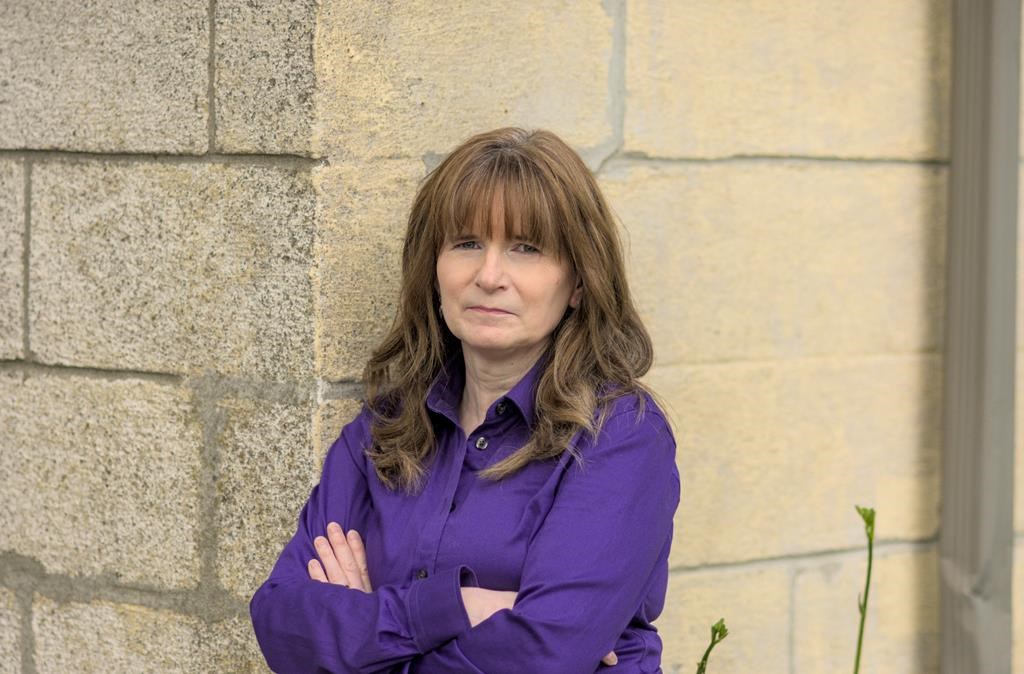The child poverty rate in Nova Scotia rose to 20.5 per cent in 2021, representing more than one in five children, according to a new report from the Canadian Centre for Policy Alternatives.

The centre’s annual report card on child poverty said the new rate is an 11.4-per cent increase from the previous year, making it the largest single-year rise in child poverty rates since 1989.
“It’s very disheartening,” said Christine Saulnier, Nova Scotia director of the Canadian Centre for Policy Alternatives and one of the report’s authors.
“It is thousands more children that have fallen into poverty since we last reported.”
According to the 2021 data, the most recent data available, Nova Scotia had the fourth-highest child poverty rate in Canada and the highest rate in Atlantic Canada.
The 20.5-per cent poverty rate means there are 35,330 children living in poverty in the province.
“We present numbers, we look at the numbers, we manipulate them in Excel spreadsheets, but behind them are real people,” Saulnier said.
The highest rate of child poverty is among babies under the age of two – one in four of whom are living in poverty.
Traditionally, Black and Indigenous communities also have disproportionately higher child poverty rates.
Saulnier said nobody should be living in poverty, but the report focuses on children to underline the urgency with which this problem needs to be addressed.
“The longer that anybody lives in poverty, obviously, the more of an impact that will have,” she said.
“The more we support them early on, the less we have to support them later.”

She said Nova Scotia is falling behind other provinces when it comes to addressing child poverty.
“1989 was when the promise was made to eradicate child poverty by the year 2000, and (since then,) Nova Scotia has only managed to reduce poverty by 16 per cent,” Saulnier said.
“Other provinces have done much better, and that’s because they have come forward with different kinds of income supports, or more income supports, than what has been in Nova Scotia.”
The report was released after another report from United Way indicated that Nova Scotia had the highest poverty rate in Canada, and Halifax had the highest poverty rate among all urban centres in the country.
More government benefits needed
In their report, the Canadian Centre for Policy Alternatives noted that Nova Scotia’s child poverty rate dropped sharply in 2020, largely due to temporary COVID-19 relief programs that have since ended.
“As we predicted last year, the data in this year’s report card reveal that poverty has increased,” said this year’s report.
- As Canada’s tax deadline nears, what happens if you don’t file your return?
- Posters promoting ‘Steal From Loblaws Day’ are circulating. How did we get here?
- Video shows Ontario police sharing Trudeau’s location with protester, investigation launched
- Is $10/day child-care at risk of ‘derailment’? Report spurs questions
“The significant pandemic benefits that made the difference were temporary, and the one-off cost of living payments by the federal and provincial governments do not adequately address the added steep increase in prices for essentials, including housing, food, and heating.
“More children have fallen into poverty because the root causes of poverty, including inadequate welfare income, discriminatory barriers to employment security, and holes in the social safety net, were not fixed.”
Saulnier said the temporary drop in child poverty in 2020 due to pandemic assistance “really underlines the impact that government can have.”
“(During the) pandemic, the economy was pretty well shut down. People lost their jobs, and in many countries across the world, poverty increased,” she said.
“And in this country … we didn’t see poverty increase. We actually saw a huge reduction in poverty because the amount of support that was provided was enough to actually lift people who were in deep poverty up above that poverty line.
“That’s been our message: it’s not little incremental amounts here and there. It’s actually allowing these families to afford the basics.”
‘No excuses’
She said government transfers — such as the Canada child benefit, the Nova Scotia child benefit, and income assistance — make a difference.
“If those did not exist, we would see almost double the numbers of children living in poverty,” she said.
“Those government transfers actually work. We want governments to recognize what the evidence is telling them.”
What’s needed, said Saulnier, is the political will to expand on those benefits and provide more help to those who need it.
“There really are no excuses,” she said, referencing the title of the report: Families deserve action, not excuses.
“It’s not about government being able to do this. I know that they can do it. They need to make a decision to.”
Province responds
In a statement, Department of Community Services spokesperson Christina Deveau disputed the numbers in the CCPA report.
“As per Statistics Canada, and using Canada’s poverty measure, the number of children living in poverty in Nova Scotia has declined significantly over recent years – from 19.7% to 6.1% in a decade,” she said.
“Nova Scotia has lower child poverty rates than the national average and all but two other provinces. However, any amount of child poverty is too much.”
But CCPA used data from tax filers to calculate poverty rates, as the market basket measure — Canada’s official measure of poverty based on the cost of a specific basket of goods and services — is “sensitive to regional differences.”
“The considerably lower poverty rates reported by the MBM are partly due to the different definitions of poverty and, in part, to the exclusion of some groups of people in Nova Scotia, including those living on reserves,” the report said.
“In addition, the small sample size, particularly in the Atlantic provinces, often returns poor data quality ratings when reporting child
poverty using the Canadian Income Survey regardless of poverty definition.”
In her statement, Deveau said the province has made a number of investments to reduce child poverty, including increasing payments under the Nova Scotia Child Benefit and reducing child-care fees.
She also said the province recently launched the Path program, which helps youth make the transition out of the care system.
“We will continue to work with partners in the private sector, and in communities, to help ensure that all Nova Scotians have the opportunity to provide for themselves and their families,” she said.





Comments